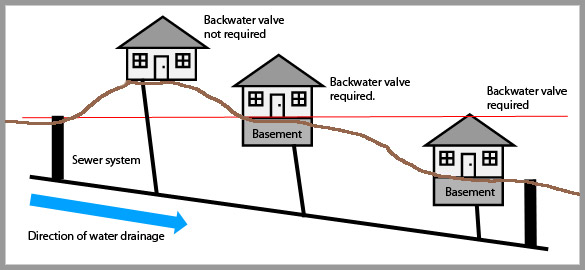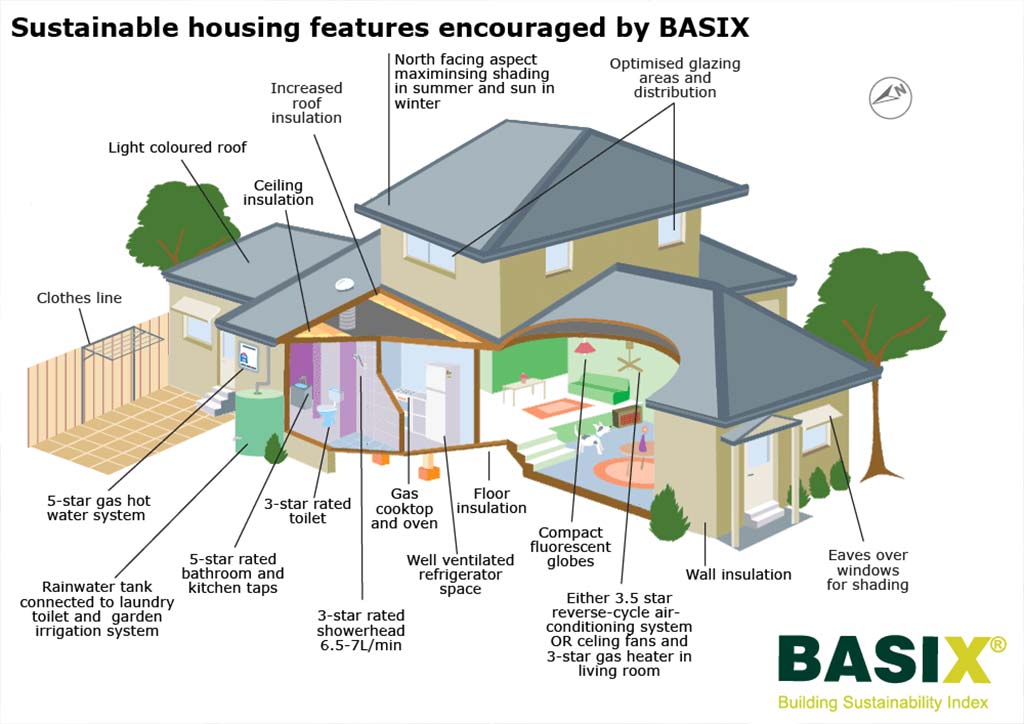The Layout of Your House's Plumbing System Explained
The Layout of Your House's Plumbing System Explained
Blog Article
Have you been searching for additional info involving Exploring Your Homes Plumbing Anatomy?

Recognizing just how your home's pipes system works is important for each homeowner. From delivering clean water for drinking, cooking, and bathing to safely getting rid of wastewater, a properly maintained pipes system is critical for your family members's wellness and convenience. In this extensive guide, we'll discover the intricate network that comprises your home's plumbing and deal tips on maintenance, upgrades, and handling usual concerns.
Introduction
Your home's plumbing system is more than just a network of pipes; it's a complex system that ensures you have access to clean water and efficient wastewater removal. Knowing its components and just how they interact can assist you avoid expensive repair work and guarantee whatever runs efficiently.
Fundamental Parts of a Plumbing System
Pipes and Tubing
At the heart of your pipes system are the pipelines and tubes that bring water throughout your home. These can be made from numerous products such as copper, PVC, or PEX, each with its benefits in terms of sturdiness and cost-effectiveness.
Fixtures: Sinks, Toilets, Showers, etc.
Fixtures like sinks, bathrooms, showers, and bathtubs are where water is used in your house. Recognizing exactly how these fixtures attach to the pipes system assists in identifying problems and planning upgrades.
Valves and Shut-off Points
Shutoffs regulate the flow of water in your plumbing system. Shut-off shutoffs are vital throughout emergencies or when you require to make repairs, permitting you to separate parts of the system without interrupting water flow to the whole house.
Water Supply System
Key Water Line
The primary water line connects your home to the metropolitan water or a private well. It's where water enters your home and is dispersed to different fixtures.
Water Meter and Pressure Regulator
The water meter actions your water use, while a pressure regulatory authority makes sure that water flows at a secure pressure throughout your home's pipes system, avoiding damage to pipelines and fixtures.
Cold Water vs. Warm water Lines
Comprehending the difference between cold water lines, which provide water directly from the major, and hot water lines, which lug heated water from the hot water heater, assists in troubleshooting and planning for upgrades.
Drainage System
Drain Water Lines and Traps
Drain pipes lug wastewater away from sinks, showers, and commodes to the drain or septic system. Traps protect against drain gases from entering your home and likewise trap particles that could trigger obstructions.
Ventilation Pipelines
Ventilation pipelines permit air into the drain system, preventing suction that might slow water drainage and trigger traps to vacant. Correct ventilation is vital for maintaining the stability of your pipes system.
Significance of Correct Drainage
Making sure appropriate water drainage avoids back-ups and water damage. Frequently cleaning up drains pipes and maintaining catches can prevent pricey repair work and prolong the life of your pipes system.
Water Heating Unit
Kinds Of Hot Water Heater
Water heaters can be tankless or typical tank-style. Tankless heaters warm water as needed, while storage tanks keep heated water for immediate use.
Updating Your Pipes System
Factors for Updating
Updating to water-efficient components or changing old pipelines can improve water quality, minimize water bills, and enhance the worth of your home.
Modern Pipes Technologies and Their Benefits
Discover technologies like smart leak detectors, water-saving toilets, and energy-efficient hot water heater that can conserve cash and lower environmental influence.
Price Factors To Consider and ROI
Determine the upfront costs versus long-term savings when considering plumbing upgrades. Many upgrades spend for themselves with lowered energy costs and less repair services.
Exactly How Water Heaters Connect to the Pipes System
Recognizing just how hot water heater attach to both the cold water supply and warm water circulation lines aids in diagnosing issues like inadequate warm water or leakages.
Upkeep Tips for Water Heaters
Consistently purging your hot water heater to get rid of debris, checking the temperature settings, and inspecting for leaks can expand its life-span and boost power effectiveness.
Typical Plumbing Problems
Leaks and Their Causes
Leaks can occur due to aging pipelines, loosened fittings, or high water pressure. Addressing leaks promptly protects against water damages and mold and mildew growth.
Clogs and Blockages
Clogs in drains pipes and commodes are commonly triggered by flushing non-flushable items or a buildup of oil and hair. Making use of drain displays and bearing in mind what decreases your drains can stop blockages.
Signs of Plumbing Troubles to Look For
Low water stress, sluggish drains, foul odors, or uncommonly high water bills are indicators of possible plumbing problems that must be addressed quickly.
Plumbing Upkeep Tips
Regular Examinations and Checks
Schedule yearly pipes evaluations to catch concerns early. Search for signs of leakages, rust, or mineral buildup in taps and showerheads.
Do It Yourself Upkeep Tasks
Simple jobs like cleansing faucet aerators, checking for commode leaks making use of color tablets, or shielding subjected pipelines in chilly climates can stop significant plumbing concerns.
When to Call an Expert Plumbing
Know when a plumbing concern requires specialist competence. Attempting complicated repairs without correct knowledge can bring about more damages and higher fixing costs.
Tips for Decreasing Water Usage
Straightforward routines like fixing leaks immediately, taking much shorter showers, and running full lots of laundry and meals can conserve water and lower your energy bills.
Eco-Friendly Pipes Options
Consider lasting plumbing materials like bamboo for flooring, which is durable and green, or recycled glass for counter tops.
Emergency situation Preparedness
Steps to Take During a Pipes Emergency
Know where your shut-off valves lie and just how to shut off the water in case of a burst pipe or significant leakage.
Significance of Having Emergency Calls Helpful
Maintain contact info for neighborhood plumbing professionals or emergency situation services easily offered for fast reaction during a pipes situation.
Environmental Effect and Preservation
Water-Saving Components and Appliances
Installing low-flow taps, showerheads, and toilets can substantially minimize water use without giving up performance.
Do It Yourself Emergency Fixes (When Appropriate).
Momentary repairs like making use of air duct tape to patch a leaking pipe or putting a container under a trickling tap can decrease damages till a specialist plumber shows up.
Final thought.
Comprehending the composition of your home's plumbing system equips you to preserve it properly, conserving money and time on fixings. By following regular maintenance routines and staying informed about modern-day plumbing technologies, you can guarantee your pipes system runs successfully for several years ahead.
HOW YOUR PLUMBING SYSTEM WORKS
Which Pipes Do What?
Blue lines = fresh water supply entering the building Red lines = hot water supply entering the building Grey lines = pipes carrying waste away from the building and venting pipes carrying gases away from the building (through the roof) YOUR MAIN PLUMBING SYSTEMS
There are two main plumbing systems that support your home s basic plumbing needs one that brings clean water into your home, and one that sends dirty water away from your home. Connected to the toilet, bath, shower, and other faucets in your home, these two systems keep your water flowing in the right directions.
ACCESSING FRESH WATER
Fresh and clean water is brought into your home through the main water supply line . Filtered through one pipe, this water is pressured to flow into the various fixtures in your home at any given time.
This water can be sourced from a well located on your property, a pond or river (mostly cottages), or, as in most cases, from the city s municipal water treatment centre. However, it is important to note that water that is untreated, such as the water siphoned from ponds or rivers, may not be safe to drink. Personal water supplies always need to be treated for hardness and contaminants before consumed.
MUNICIPAL WATER SUPPLIES
Improve taste and odour Remove sediment Eliminate hardness Reduce chlorine COLD WATER SUPPLY VS. HOT WATER SUPPLY
Cold water flows into your home or building through the service line, which then distributes hot or cold water to your fixtures. This line is most commonly run through a central column that runs floor to floor. Hot water runs in short and straight pipes as the longer the pipeline, the more heat that will be lost in the transfer. Having shorter pipes also allows residents to access hot water more quickly.
WASTE WATER SYSTEM
Your wastewater system is divided into two parts pipes that send wastewater away from your home and venting pipes that send sewer gas away from your home. Sewage water travels through pipes that flush the water and waste towards local sewers that are operated and managed by your city or town. Most sewer systems rely on gravity to move the wastewater to where it needs to go.
The further away from your toilet or sink, the larger wastewater pipes become. This allows for waste to be disposed of from various parts of your home or business at once without pipe blockages. The angle and flow of these pipes are also essential for keeping your waste pipes clear of build up.
https://harrisplumbing.ca/how-your-home-plumbing-system-works/

I hope you enjoyed reading our topic on Anatomy of a House: Understanding the Components. Thanks a lot for taking time to read our posting. I beg you take a moment to promote this blog posting if you enjoyed it. Many thanks for taking the time to read it.
Start Now Report this page